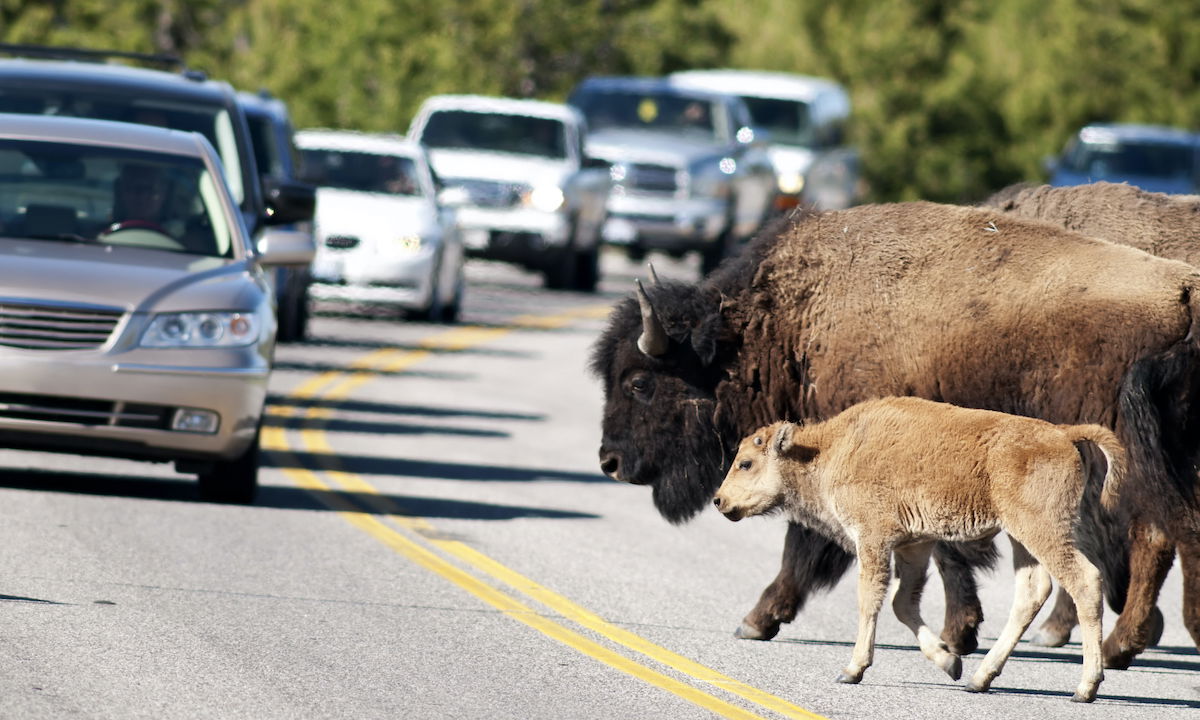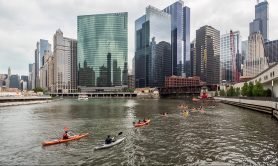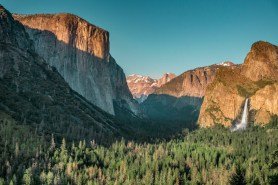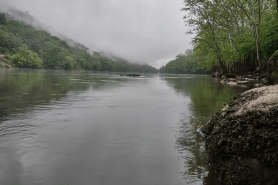

All around North America, the car-free park movement seems to be gaining steam. Last year, Rock Creek, a city park managed by the National Park Service in Washington D.C., decided to close five miles of its popular main road to cars. And now, the world-famous Banff National Park in Canada has announced a similar ban.
In the case of Rock Creek Park, officials decided that banning cars would make pedestrian travel safer, reports The Washington Post. And in Banff, authorities realized that illegal parking at trailheads was getting so out of hand that emergency vehicles couldn’t get through. Banning cars was both a matter of preserving the environment and ensuring visitor safety.
So, could America’s marquee national parks be next?

Some say the movement has already begun. It’s currently illegal to drive in Zion National Park nine months out of the year. Instead, a rotating schedule of shuttle buses ferries visitors to and from trailheads. (This policy was first instituted in 2000.) Denali National Park has a similar system. While 15 miles of the park’s main road are open to private vehicle traffic, most trailheads and campgrounds are only accessible by shuttle bus.
While some other national parks may be considering car-free strategies, it will likely be several years before any new systems go into a pilot phase. Still, a number of parks are already instituting strict new entry systems to limit visitation and spread out crowds. This year alone, eight national parks have announced that guests will need advance reservations, at least in certain areas, if they hope to visit in 2023.
Some have argued that reservation systems and car bans make national parks less accessible to those who are differently abled or come from less privileged backgrounds. Others say that fee-free days and shuttle systems keep parks accessible to a range of people, even with the new systems in place.
Regardless, it’s hard to argue that crowding isn’t an issue. American national parks currently see around 300 million visitors every year. That number is projected to rise over the next decade. If the trend continues, we can likely expect more national parks to close their gates to personal vehicles, at least during the busy seasons.

Again, there are no firm plans in the works that we know of. But, if we had to bet, we’d put our money on Yosemite National Park and Rocky Mountain National Park as among the first to try such schemes. Arches National Park and Great Smoky Mountains National Park—two more parks with high annual visitation—could also be high on the list.
While bad news for road-trippers, car-free policies could be good news for many recreationists. In Montana’s Glacier National Park and Alaska’s Denali National Park, for example, the main roads close to cars—but remain open to bikes—during early spring. That gives cyclists a unique opportunity to explore the park on safe, quiet roads before cars and shuttle buses start running.
Removing vehicles from national parks could also result in cleaner air and prevent deadly wildlife collisions, reports the Sierra Club. Only time will tell of American parks get on board with the car-free movement in the coming years. But if they do, it’s possible that the changes could reshape our national park system for the better.









